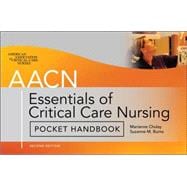
What is included with this book?
Suzanne Burns, RN, MSN, RRT, ACNP, CCRN, FAAN, FCCM, is a Professor of Nursing, an Advanced Practice Nurse 2 in the MICU, and the Director of the Professional Nursing Staff Organization's Clinical Research Program at the University of Virginia Health Systems in Charlottesville Virginia. She is known nationally for her work in the areas of weaning, mechanical ventilation and clinical research. Suzi speaks and publishes widely on these and many other topics and is the inventor of the Burns Wean Assessment Program (BWAP). She has received numerous awards such as the American Association of Critical Care Nurses (AACN) Distinguished Researcher Award and Mentoring Award, the University of Virginia (UVA) ?Outstanding Contributor Award, UVA School of Nursing's Alumni Excellence in Teaching Award and "Leadership Award", and the Sigma Theta Tau Distinguished Nurse Award. Suzi is also a recent past member of the AACN's Board of Directors.
The New copy of this book will include any supplemental materials advertised. Please check the title of the book to determine if it should include any access cards, study guides, lab manuals, CDs, etc.
The Used, Rental and eBook copies of this book are not guaranteed to include any supplemental materials. Typically, only the book itself is included. This is true even if the title states it includes any access cards, study guides, lab manuals, CDs, etc.